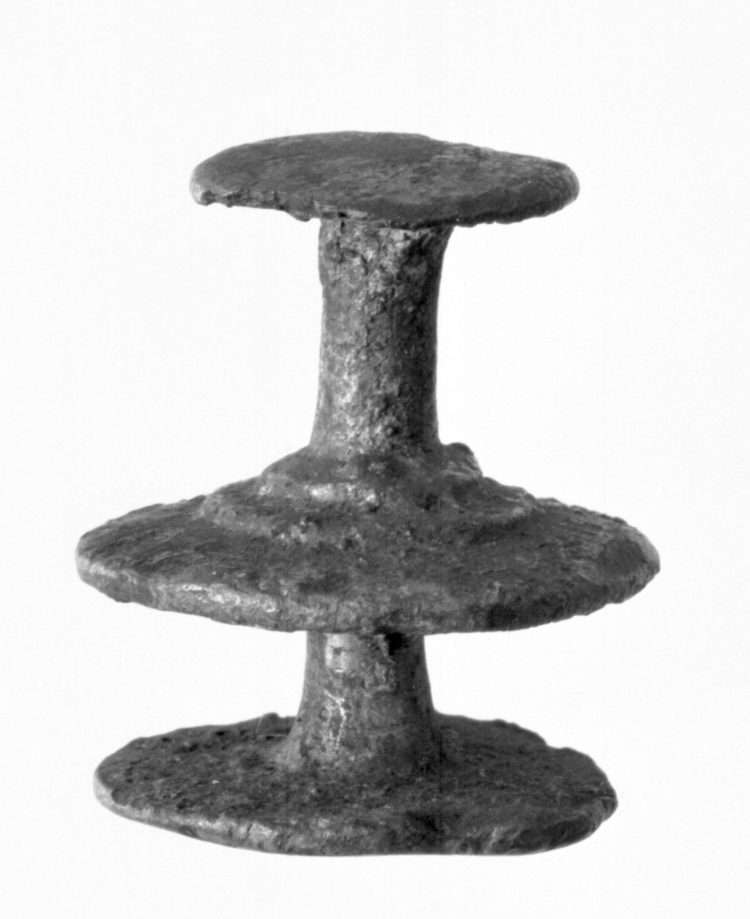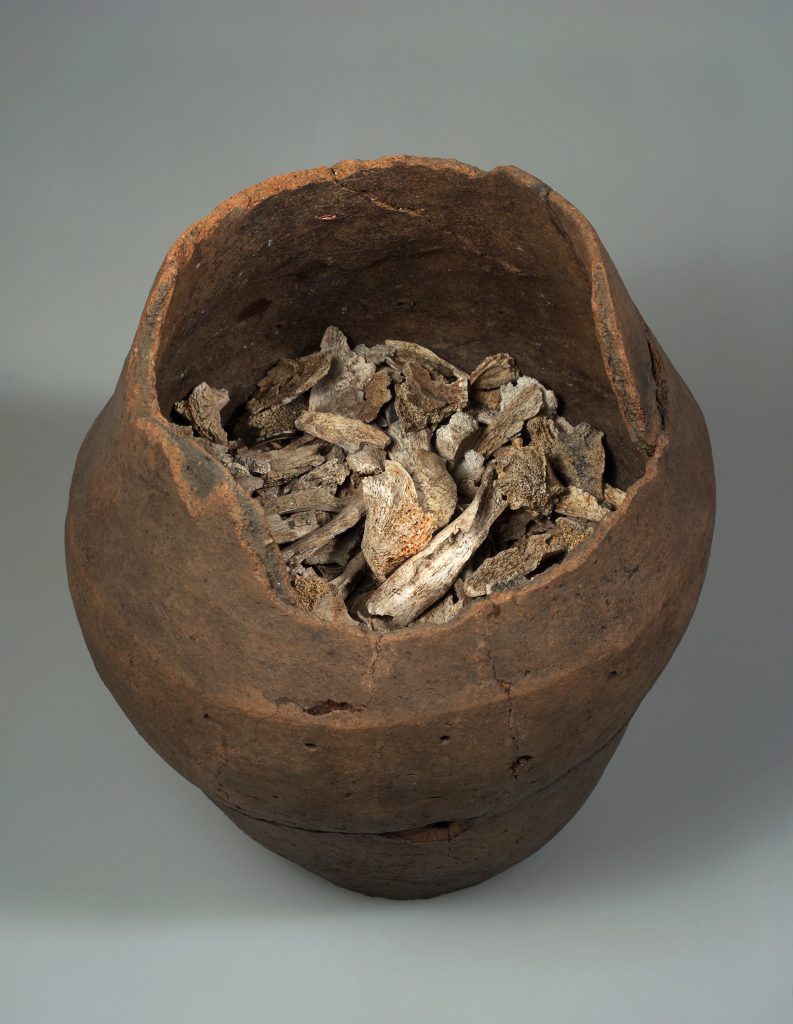



Dagger. It has a triangular hilt plate, the blade has a marked center rib, and there are some notches along the sides. The blade is corroded. Length: 26.3 cm. B5952/a.
Small razor with horse head-shaped handle. The blade is curved, the end is broken. The handle is long, slender and curved, and ends in a horse’s head. There is no other decoration. Length: c. 7 cm. B5952/b.
Complete fibula with disc-shaped head and spiral ends. There is weak decoration on the hoop: slanted, twisted lines. The fibula is heavily corroded. Length: 9.7 cm. B5952/c.
Double button, consisting of two disks connected by a short rod. The upper plate is domed and decorated: a star in the center, surrounded by parallel lines. Part of the disc is damaged. The double button is corroded. Width: 2.7 cm. B5952/d.
Decorated tweezers. The bow is broken. There is a thin line and two rows of triangles running from the bow to the mouth of the tweezers. The decoration is weak due to wear and corrosion. Length: 9.3 cm. B5952/e.
Photo: Svein Skare © University Museum in Bergen, CC BY-SA 4.0
Location:
Gunnarshaug, Karmøy, Rogaland
Context:
Found in a mound, «Kubbhaug», excavated by Shetelig and Brøgger in 1905. The mound was 17 x 2.7 m and was built of earth, with a layer of round stones at the bottom. The remains of a disturbed curb could be seen near the edge of the mound. An inner coffin was found NW of the centre, it measured 3.5 x 2.7 m, height 0.85 m. The coffin covered a brick chamber, 1.8 x 0.6 m, 0.4 m deep. The bottom was covered with small stones and bark. A cranium was found at the northern end of the coffin, other bones were found in the middle.
Date:
The collection can be dated to the Early Bronze Age period 3.
















